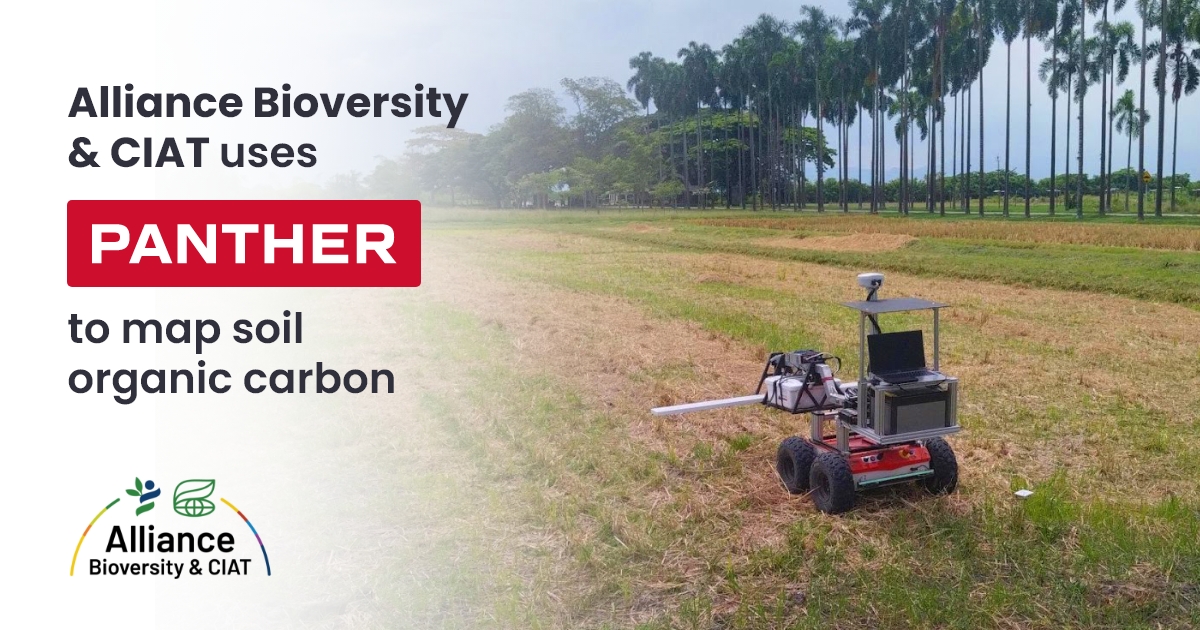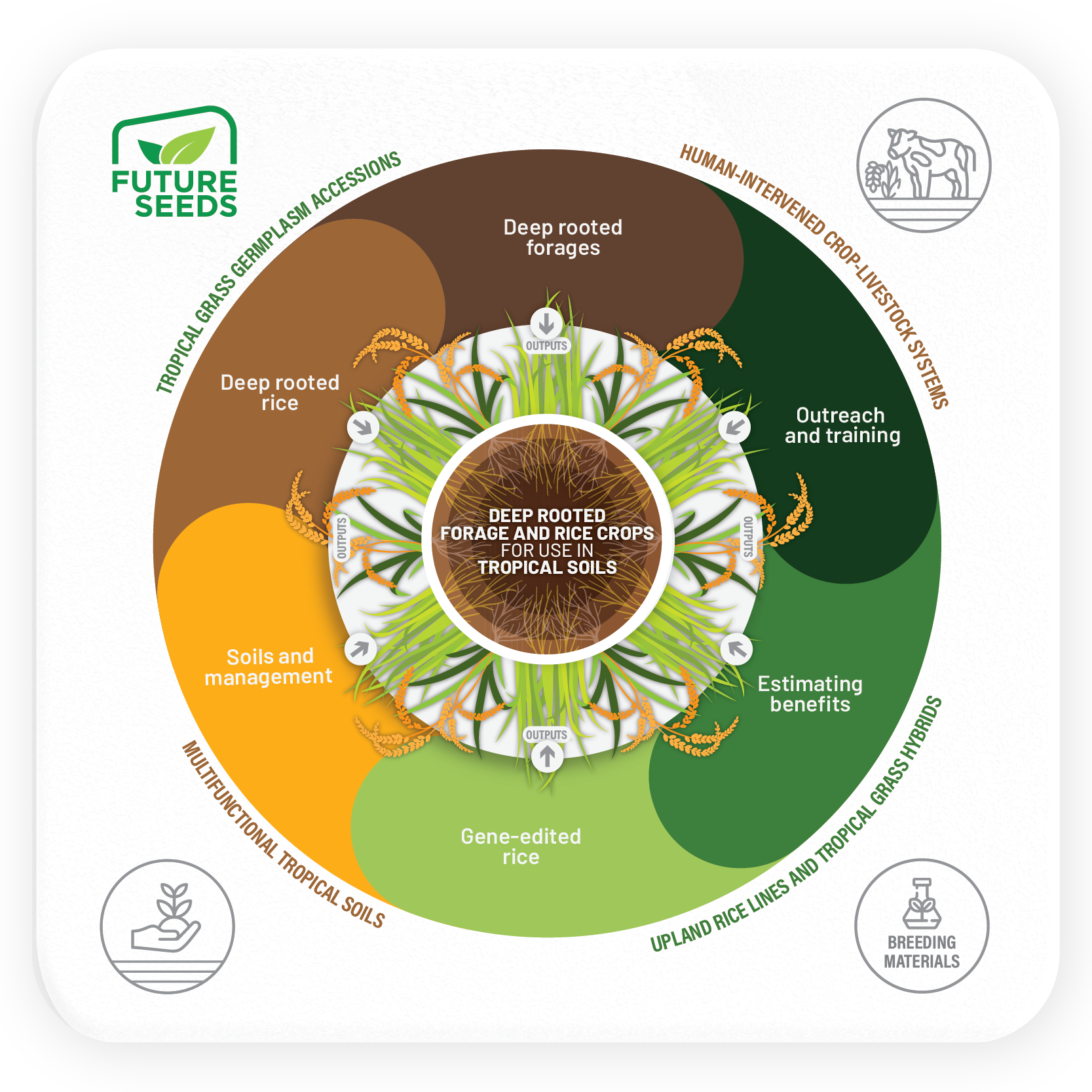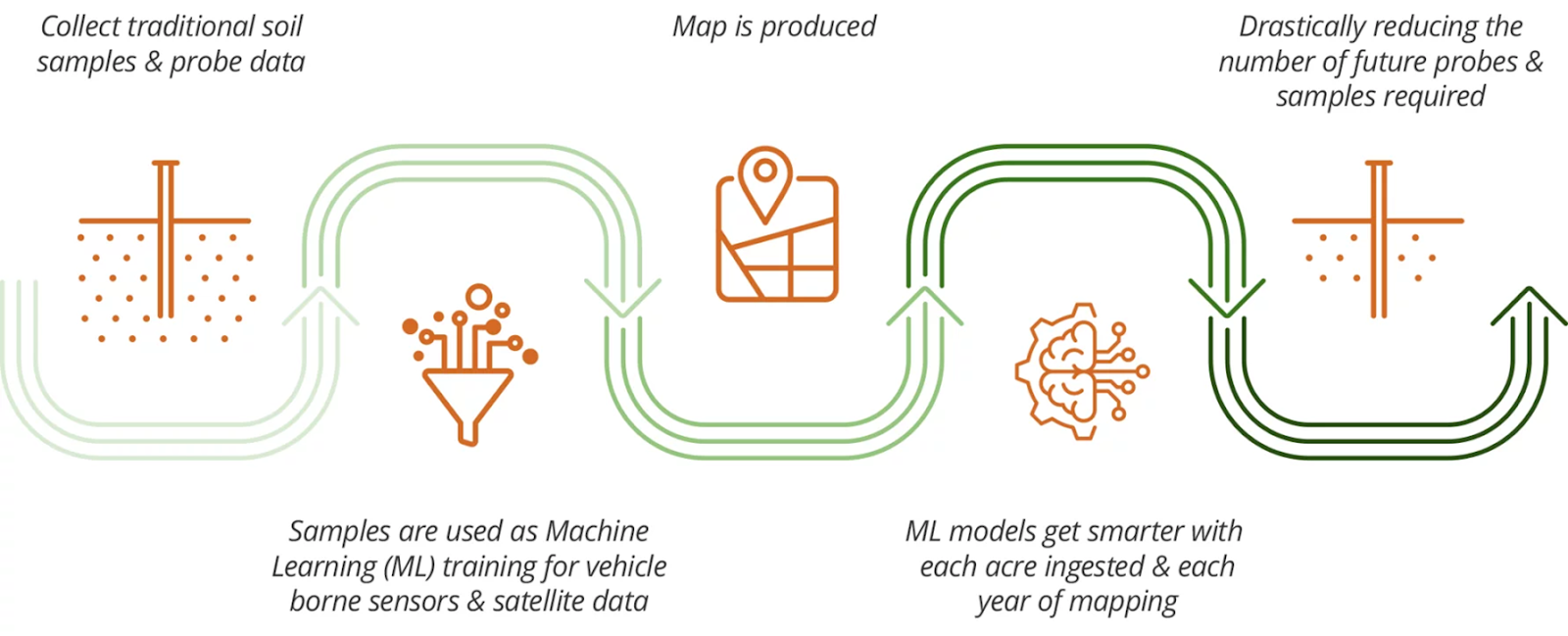Alliance Bioversity & CIAT uses Panther to map soil organic carbon
There is no greener industry than agriculture, right? While this claim may seem intuitive, current data reveals that land use related to agriculture contributes to as much as 10% of global CO2 emissions. With the escalating global climate crisis, the need to reduce agricultural emissions has become more pressing than ever.
But what if instead of drastically limiting emissions, we could just use the natural process of photosynthesis to address the challenge and actively remove CO2 from the atmosphere? Plants inherently capture carbon dioxide through photosynthesis, and the carbon they trap can be transformed into soil organic carbon - a phenomenon known as carbon sequestration.

The Alliance of Bioversity International and CIAT is actively exploring the potential of using and expanding this natural capacity of plants, leading the Carbon Sequestration Project supported with funding from the Bezos Earth Fund. The project focuses on developing new kinds of grass and rice capable of greater carbon assimilation via photosynthesis and improved deep rooting ability, aiming to significantly enhance carbon storage in tropical soils.
To assess the effectiveness of their solutions and track progress in the project, the researchers implemented a novel soil carbon mapping solution, using Husarion Panther as a mobile base.
Keep reading to explore the details behind soil carbon mapping technology and learn how Panther is used to monitor soil properties and guide informed decisions on strategies for carbon sequestration.
Technology in the service of sustainable agriculture
Established in 2019, the Alliance of Bioversity International and the International Center for Tropical Agriculture (CIAT) was created to address climate change, biodiversity loss, environmental degradation, and malnutrition.
As an integral part of the CGIAR system, Alliance Bioversity & CIAT works with key partners at local, national, regional, and global levels — from indigenous communities and civil society organizations to large corporations, academic institutions, and international organizations. They are particularly focused on developing and leveraging the area of digital agriculture to support the efforts of low- and middle-income countries in building climate resilience capacity, transforming the entire food systems cycle, and improving people’s lives in a climate crisis.
Digital agriculture refers to the use of technology to enhance and optimize various aspects of agriculture while reducing costs and minimizing negative impacts on the environment. Possible applications include, among others, remote sensing, smart irrigation, or precision agriculture — a farming management strategy based on constant monitoring to ensure that crops and soil receive exactly what they need for optimum health and productivity. The use of digital tools and research data can help plant breeders and farmers make more informed decisions, monitor their crops more effectively, and improve their overall profitability.
One of the actions from the area of digital agriculture is the Carbon Sequestration Project, which focuses on measuring, modeling, and mitigating greenhouse gas emissions and carbon storage in agricultural systems in developing countries.

Objectives and outputs of the carbon sequestration project
As described above, although agriculture accounts for a large part of global greenhouse gas emissions, it can be used at the same time to capture and store carbon in the soil thanks to photosynthesis. The Carbon Sequestration project focuses on enhancing the efficiency of this natural process, using gene-editing techniques to develop new kinds of tropical forage grass and rice with a greater ability to assimilate carbon via photosynthesis and roots that delve deeper into the soil, allowing for the storage of larger amounts of carbon in the ground. Even a slight increase in soil organic carbon could help slow the rise of atmospheric CO2 concentration, with the potential to have a considerable impact on the global climate system.
To test new kinds of crops and measure the current efficiency of the carbon sequestration process, the project is using the combined power of advanced satellite imaging technologies, enabling the mapping of above-ground carbon storage potential in croplands and grasslands, along with below-ground carbon mapping technology that can accurately measure and model soil properties, including carbon content.
Let’s take a closer look at how below-ground carbon mapping technology works and how Panther helps implement it in the field.
Mapping soil organic carbon
Below-ground carbon mapping solution used by Alliance Bioversity & CIAT consists of two components:
- Electromagnetic Induction (EMI) technology, which enables precise measurement and modeling of soil properties such as texture, salinity, organic matter content, and water-holding capacity.
- Ground Penetrating Radar (GPR), which allows for the detection of textural changes and measurement of the soil layers’ depth.

Scheme of below-ground carbon mapping
The multimodal approach of using both GPR and EMI to measure soil properties enables Alliance Bioversity & CIAT to identify and develop deep-rooted tropical forage grasses and rice, as well as to estimate their effectiveness in removing carbon from the atmosphere.
To make soil mapping as efficient and automatic as possible, Alliance Bioversity & CIAT use Panther as a mobile robot platform for their solution. Integrated with EMI and GPR modules, along with GPS sensors, Panther scans the fields of interest and collects data using fusion sensor techniques, helping to promote sustainable agriculture, reduce erosion, and mitigate climate change.

Panther - a universal, robust mobile platform for agriculture
There are several reasons why Alliance Bioversity & CIAT decided Panther was a good choice for their project.
First of all, it is well-suited to work in challenging agricultural terrain, thanks to the high-profile off-road wheels with four independent BLDC motors and an IP66 rate of protection. It turned out that the moderate weight of Panther was also significant.
"One of the main advantages of using this robot is that even if the fields are sown in the case of forage grass, we can enter them because of the weight of the robot", states Michael Selvaraj, Leader of Digital Agriculture at the Alliance of Bioversity International and CIAT.
Another advantage was the possibility of easy and smooth integration with all necessary components, including EMI and GPR modules, as well as GPS sensors and an additional battery. Thanks to Panther’s high payload capacity and modular electronic design, all these components could be easily mounted on the robot using a custom-made structure built with aluminum profiles.

Finally, multiple built-in connectivity (Wi-Fi, dual-SIM 4G (LTE) – Cat 6) and navigation (GPS, GLONASS, BeiDou, Galileo and QZSS) options and open-source ROS-based software allowed the Alliance to quickly deploy Panther in the field, concentrating on what was most important in their research - developing new kinds of plants with enhanced capacity for carbon removal and disseminating them in tropical soil regions of Africa and Latin America.
"Panther empowers researchers, farmers, and land managers to optimize soil health and implement targeted strategies for carbon sequestration. By accurately mapping soil organic carbon, we can make informed decisions that promote sustainable agriculture, control erosion, and mitigate climate change", states Michael Selvaraj.
Interested to know more?
Alliance Bioversity & CIAT use case demonstrates how useful Panther can prove in digital agriculture, enabling researchers and farmers to automate soil monitoring in demanding terrain. What’s more, it is not the first project where Panther has contributed to reducing CO2 emissions. If you’re interested in learning more, check out the blog post on how Panther is used by Rock-Farm to construct CO2 absorbent walls.
To delve deeper into the Carbon Sequestration Project and various other initiatives of The Alliance of Bioversity International and CIAT, visit their website.
And if you believe that Panther could be equally useful in your use case, don’t hesitate to see it in our store or contact us at contact@husarion.com.
